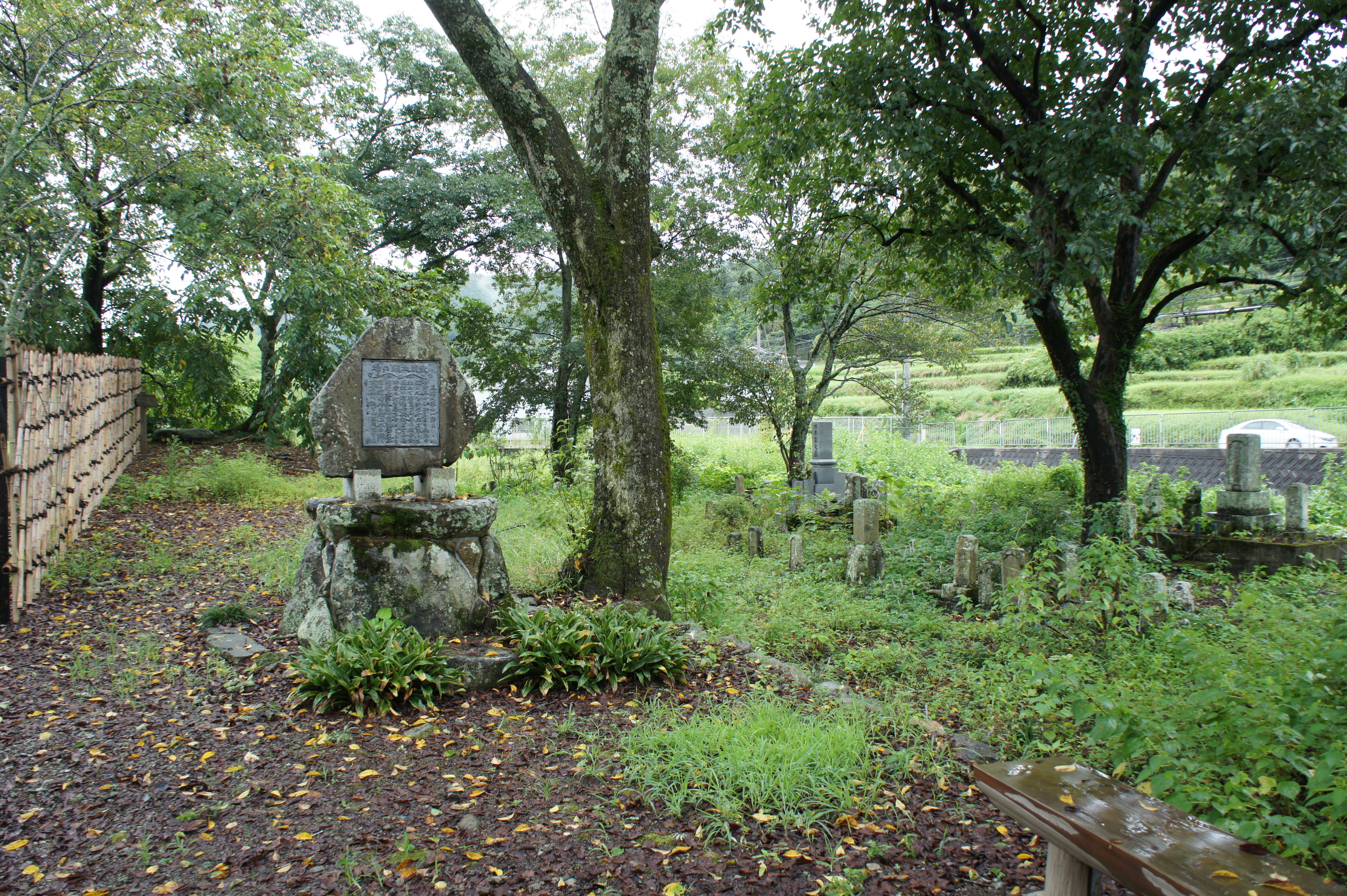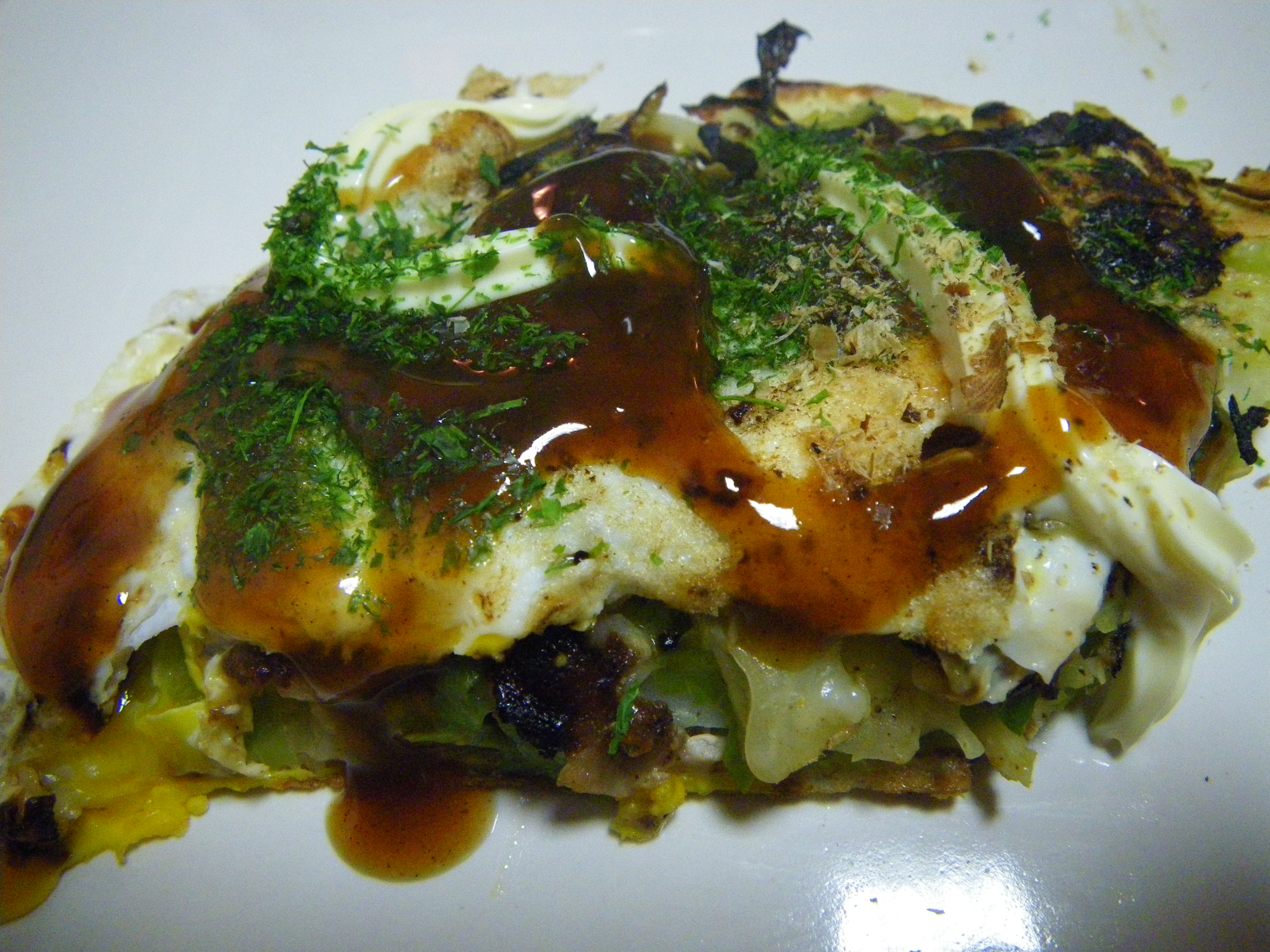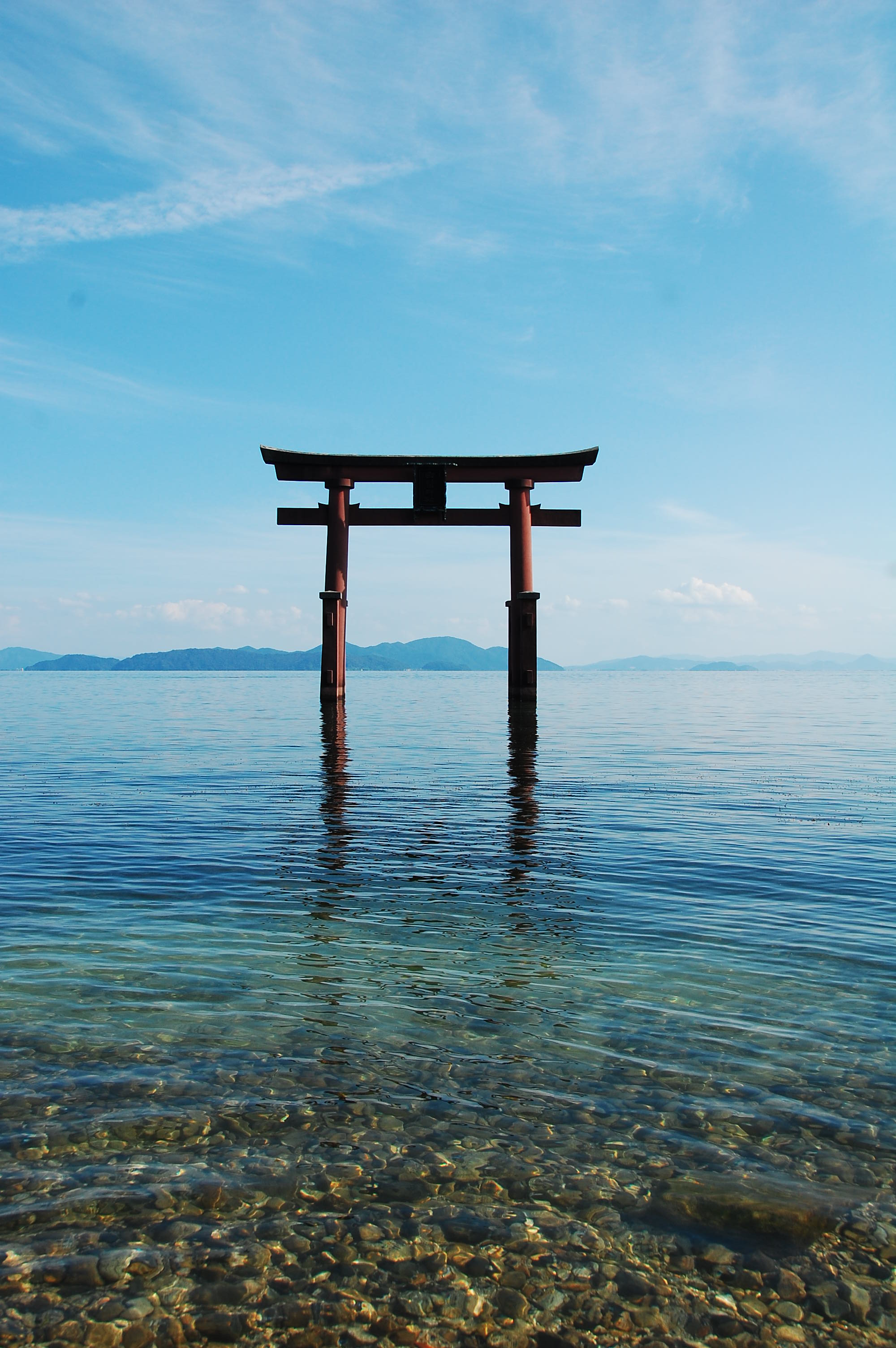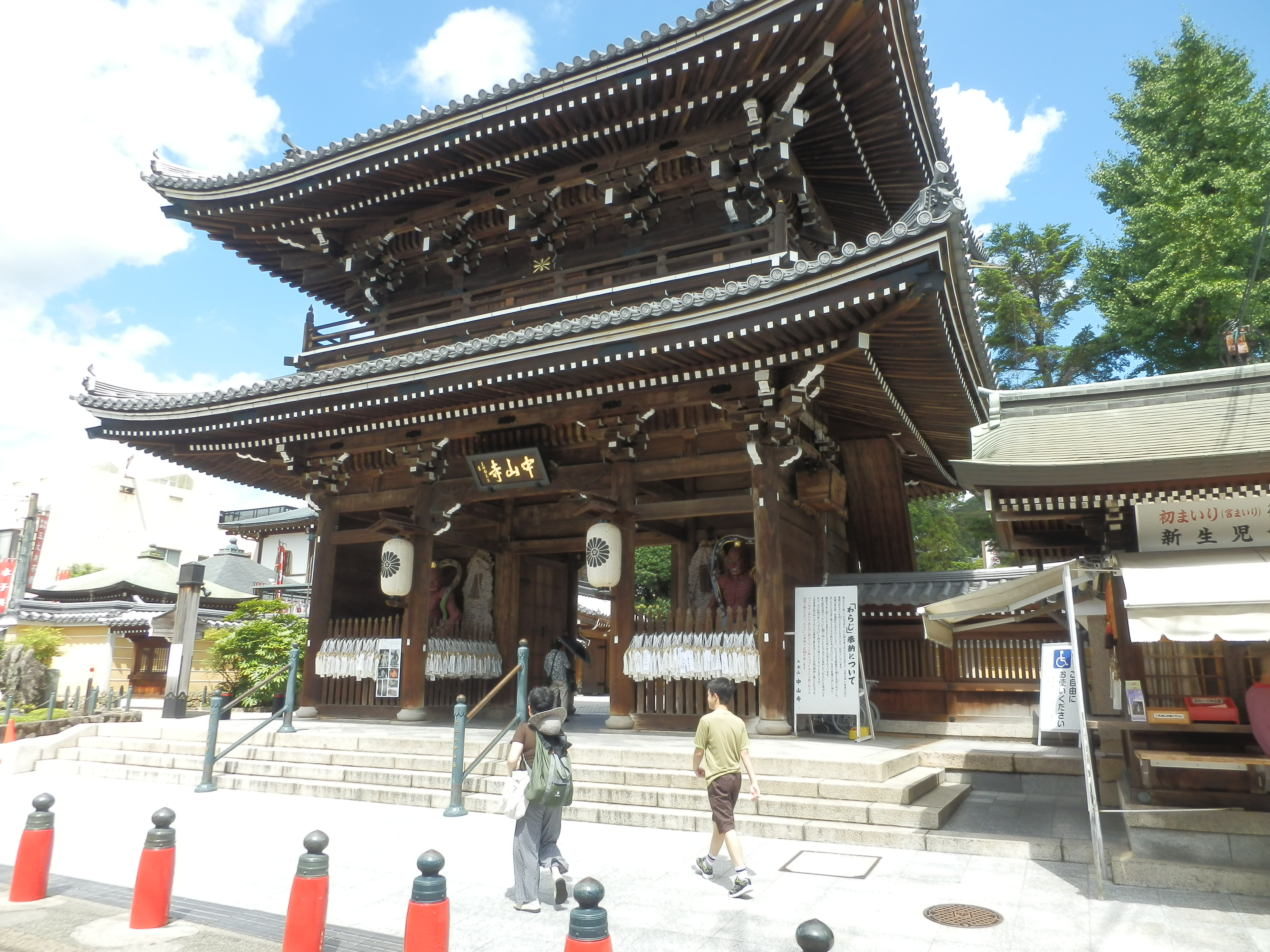Saigoku Kannon Pilgrimage: Kiyomizudera
As you prepare for the advent of spring, our quest for pilgrimage temples takes us further afield. Our next explorations will be into Kyoto, Osaka, and beyond.  There are five pilgrimage temples clustered right in the city of Kyoto, and we’ll get to the other four later on. We shall begin with one of the biggest, most recognizable temples on the circuit today: Kyoto’s Kiyomizudera.
 The main Kannon image enshrined in this cultural heritage icon is a wooden åƒæ‰‹å一é¢è¦³éŸ³, a Kannon with eleven faces and a thousand arms, carved during the Heian era (794-1192). Every 33 years, ribbons are connected to the image so that pilgrims can touch the other end and be connected in that way, but otherwise the image is truly secret. There are no photographs and not even the priests look upon it. There is a likeness of the enshrined image, called an ãŠå‰ç«‹ã¡ (maedachi) from which we can see that the image is unique: one pair of Kannon’s arms are raised above her head, holding a small Buddha. No other Kannon images have this feature.
The main Kannon image enshrined in this cultural heritage icon is a wooden åƒæ‰‹å一é¢è¦³éŸ³, a Kannon with eleven faces and a thousand arms, carved during the Heian era (794-1192). Every 33 years, ribbons are connected to the image so that pilgrims can touch the other end and be connected in that way, but otherwise the image is truly secret. There are no photographs and not even the priests look upon it. There is a likeness of the enshrined image, called an ãŠå‰ç«‹ã¡ (maedachi) from which we can see that the image is unique: one pair of Kannon’s arms are raised above her head, holding a small Buddha. No other Kannon images have this feature.
The Hondo was built in 1633, though the style of it is older than that. The cross-beaming that supports the platform jutting from the Hondo was built without the use of nails to hold it together. Many tourists cluster here and wait their turn to take photos, but most skip entering the Hondo itself, which is allowed, and which is very peaceful and quiet, especially compared to the hustle and bustle of this famous place. The secret Kannon image is inside an ornate zushi, surrounded by guardian deities.
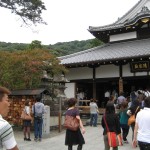 The office where you get your pilgrimage stamp is just past the Hondo on the left, as is the path to the Jishu Shrine. This shrine, built in 1633, is dedicated to the kami of love and marriage. A notice board at the front of the shrine names those who have married and returned to the shrine to give thanks. In front of the main shrine are a pair of stones about ten meters apart, called the “Fortune Tellers of Love.†If someone is able to walk straight from one to the other with their eyes closed, that person’s love will be realized.
The office where you get your pilgrimage stamp is just past the Hondo on the left, as is the path to the Jishu Shrine. This shrine, built in 1633, is dedicated to the kami of love and marriage. A notice board at the front of the shrine names those who have married and returned to the shrine to give thanks. In front of the main shrine are a pair of stones about ten meters apart, called the “Fortune Tellers of Love.†If someone is able to walk straight from one to the other with their eyes closed, that person’s love will be realized.
Beyond these two is the Okunoin, also from 1633. It looks a lot like the Hondo, with its own platform structure facing out over the city. The Okunoin is said to be in the location where the original hermitage that developed into this massive temple was first located. Enshrined in the Okunoin is a thousand-armed Kannon with attendants.
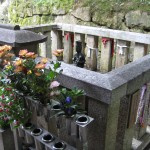 Behind the Okunoin is a little pond with a small stone statue called Nurete Kannon, or “wet-hands Kannon.†If you pour water from the sacred spring (or “pure spring†from which comes the temple’s name) over this Kannon, you will purify yourself, body, heart, and mind.
Behind the Okunoin is a little pond with a small stone statue called Nurete Kannon, or “wet-hands Kannon.†If you pour water from the sacred spring (or “pure spring†from which comes the temple’s name) over this Kannon, you will purify yourself, body, heart, and mind. 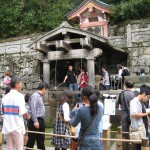 Below the path, you will see a tri-part waterfall, most likely with a line of people waiting to take a sip. Pilgrims drink the water in hopes of taking in some of that purifying, healing energy from this natural spring that has been flowing for over a thousand years.
Below the path, you will see a tri-part waterfall, most likely with a line of people waiting to take a sip. Pilgrims drink the water in hopes of taking in some of that purifying, healing energy from this natural spring that has been flowing for over a thousand years.
Before all of this, however, you will see the entrance to the Zuigu-do (just before the Hondo). For a 100-yen donation, you can take part in the “Womb Pilgrimage†here. This will lead you underground into a tunnel that is indeed pitch-dark. Eventually you will come upon a stone with Sanskrit writing that symbolizes Zuigu Bosatsu, a bodhisattva said to grant all requests. By having faith and entering into the darkness, your prayers will be answered. Coming out of the dark, you are reborn.
 There are many other buildings, including gates, other enshrined images, and picturesque pagodas at this temple. For information about some of the other architectural features at Kiyomizu-dera, check out Sacred Japan (link to: http://sacredjapan.com/Temple%2016/Places16.htm).
There are many other buildings, including gates, other enshrined images, and picturesque pagodas at this temple. For information about some of the other architectural features at Kiyomizu-dera, check out Sacred Japan (link to: http://sacredjapan.com/Temple%2016/Places16.htm).


